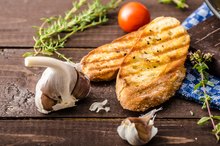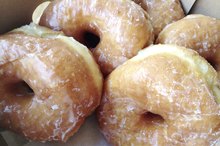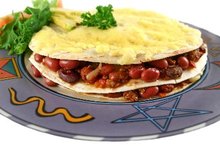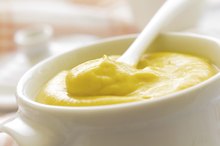What does fact checked mean?
At Healthfully, we strive to deliver objective content that is accurate and up-to-date. Our team periodically reviews articles in order to ensure content quality. The sources cited below consist of evidence from peer-reviewed journals, prominent medical organizations, academic associations, and government data.
The information contained on this site is for informational purposes only, and should not be used as a substitute for the advice of a professional health care provider. Please check with the appropriate physician regarding health questions and concerns. Although we strive to deliver accurate and up-to-date information, no guarantee to that effect is made.
Calorie Count and Glycemic Index of Different Breads
Bread is a diet staple for many North Americans, who might eat different types of bread at breakfast, lunch and dinner. Although it's a convenient meal addition and can provide a source of grains, eating bread isn't without its drawbacks. In many cases, bread is high in calories and also ranks high on the glycemic index. High-glycemic foods elevate your blood sugar quickly, while low-glycemic foods cause a slower increase.
Everyday Breads
If you typically purchase a loaf of white, whole-wheat, French or Italian bread during your supermarket visit, expect each type of bread to have between 70 and 93 calories per slice. Per 1-ounce slice, white and whole-wheat bread have 76 and 70 calories, respectively. A 1.1-ounce slice of French bread has 93 calories, while a 1-ounce slice of Italian bread has 77 calories. Despite having the same number of calories as white bread, whole-wheat bread is higher in vitamins, minerals and fiber.
- If you typically purchase a loaf of white, whole-wheat, French or Italian bread during your supermarket visit, expect each type of bread to have between 70 and 93 calories per slice.
- Per 1-ounce slice, white and whole-wheat bread have 76 and 70 calories, respectively.
Other Types of Breads
Can Diabetics Eat Rye Bread & Pumpernickel Bread?
Learn More
Whether you favor rye bread for your sandwiches or enjoy the strong flavor of pumpernickel, the caloric value of several other breads isn't hugely different from those you eat every day. A 1-ounce slice of egg bread has 80 calories, as does a 1.1-ounce slice of pumpernickel bread. Rye bread has 73 calories per 1-ounce slice, and the same-size slice of raisin bread has 78 calories.
High-Glycemic Breads
Several varieties of bread have a glycemic index of at least 70, making them high-glycemic food sources. A baguette has a glycemic index of 95, while white and whole-wheat bread each have a glycemic index of 71. You should ideally limit your intake of high-glycemic foods, as consistently eating this type of food can lead to health problems including Type 2 diabetes.
Medium-Glycemic Breads
Are Cellophane Noodles Low in Calories?
Learn More
Although some brands of whole-grain bread can have a low glycemic index, Harvard Health Publications notes that most breads that aren't high-glycemic are medium-glycemic 2. These breads include pita bread, with a glycemic index of 68, and pumpernickel, which has a glycemic index of 56. Fifty percent cracked kernel bread has a glycemic index of 58.
Related Articles
References
- Harvard Health Publications: Glycemic Index and Glycemic Load for 100+ Foods
- Eat Right Ontario: Getting to Know the Glycemic Index
- Eat Right Ontario: Choosing Whole Grains FAQs
- U.S. Department of Agriculture. Bread, whole-wheat, commercially prepared. FoodData Central. 2019.
- Ma Y, Olendzki BC, Wang J, et al. Single-Component Versus Multicomponent Dietary Goals for the Metabolic Syndrome: A Randomized Trial. Ann Intern Med. 2015;162(4):248-257. doi:10.7326/M14-0611
- Clark MJ, Slavin JL. The effect of Fiber on Satiety and Food Intake: A Systematic Review. J Am Coll Nutr. 2013;32(3):200-211. doi:10.1080/07315724.2013.791194
Writer Bio
Toronto-based journalist William McCoy has been writing since 1997, specializing in topics such as sports, nutrition and health. He serves as the Studio's sports and recreation section expert. McCoy is a journalism graduate of Ryerson University.









